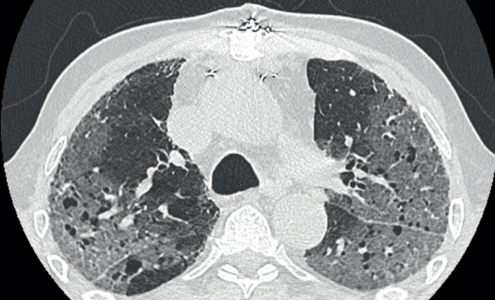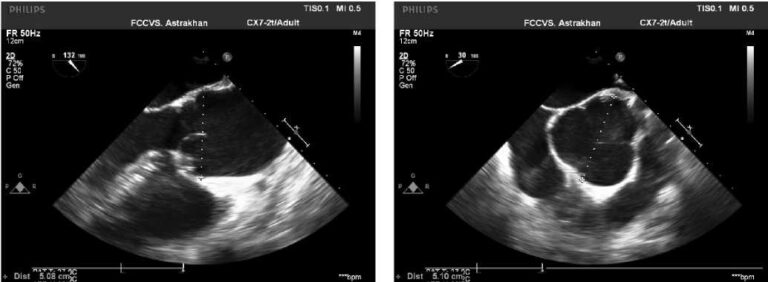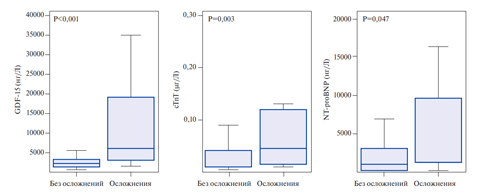Ticagrelor in patients with stable coronary artery disease: a role in improving prognosis
In mid-August 2020, new national guidelines for stable coronary artery disease (CAD) were published on the websites of the Russian Society of Cardiology and the Ministry of Health of the Russian Federation [1]. The guidelines emphasize that, according to the Russian Federal State Statistics Service, since 2010 in Russia there has been a gradual decrease in cardiovascular mortality. At the same time, CAD still occupies a leading position in patterns of cardiovascular mortality. The annual proportion of mortality due to CAD in Russia reaches 27% [1]. Among patients with CAD, 1,2-2,4% die annually [1][2]. These values differ significantly in populations of patients with low, moderate, and high risk of ischemic events: the higher the risk, the higher the mortality rate. A key point in improving the prognosis in CAD patients, along with the modification of risk factors, is played by optimal medical therapy. In addition to drugs aimed at controlling symptoms, patients with CAD should receive drugs that reduce the risk of cardiovascular events: antithrombotic drugs, lipid-lowering drugs, angiotensin-converting enzyme inhibitors (ACE inhibitors) or angiotensin II receptor blockers (ARBs) [1].
The 2019 European Society of Cardiology guidelines introduced the concept of chronic coronary syndromes (CCS) and identified six clinical scenarios most common in patients with stable CAD:
- Patients with suspected CAD and ‘stable’ anginal symptoms, and/or dyspnoea;
- Patients with new onset of heart failure or left ventricular dysfunction and suspected CAD;
- Asymptomatic and symptomatic patients with stabilized symptoms <1 year after an acute coronary syndrome or patients with recent revascularization;
- Asymptomatic and symptomatic patients >1 year after initial diagnosis or revascularization;
- Patients with angina and suspected vasospastic or microvascular disease;
- Asymptomatic subjects in whom CAD is detected at screening.
All of these scenarios are classified as CCS, but are associated with different risks of future cardiovascular events. The risk can both increase and decrease depending on changes in lifestyle, therapy, secondary prevention and results of revascularization. Thus, CCS are various evolutionary forms of CAD, except for those cases when the clinical performance is determined by acute coronary thrombosis, ie, the acute coronary syndrome [1].
According to the 2020 national guidelines for the prevention of cardiovascular events, all patients with stable CAD are recommended to take acetylsalicylic acid (ASA) at a dose of 75-100 mg/day. In the case of ASA intolerance, clopidogrel is recommended as an alternative antiplatelet agent [1][3]. In the case of intolerance to both ASA and clopidogrel, ticagrelor may be considered [1][4][5].
To improve the prognosis in patients with stable CAD, high risk of ischemic events, and non-high risk of bleeding, it is recommended to consider longterm dual antithrombotic therapy (class IIa, level of evidence A) [1][6]. High-risk patients include patients with multivessel CAD in combination with at least one of the comorbidities: diabetes requiring drug therapy, previous myocardial infarction (MI), peripheral artery disease, stage 3-4 chronic kidney disease (CKD) (glomerular filtration rate 15-59 ml/ min/1,73 m2) [1][6]. Patients with stage 5 CKD also have a high ischemic risk, but due to the high risk of bleeding, dual antithrombotic therapy is not indicated for them.
In addition to patients with a high risk of ischemic events, dual antithrombotic therapy can be prescribed to improve the prognosis in patients of the moderate ischemic risk and non-high bleeding risk (class IIb, level of evidence A) [1][6]. Patients have a moderate risk if they have one of the following conditions: multivessel CAD, diabetes requiring drug therapy, previous MI, peripheral arterial disease, stage 3-4 CKD (glomerular filtration rate 15-59 ml/ min/1,73 m2) [1][6].
When dual antithrombotic therapy is prescribed to a patient, its duration is determined by the riskbenefit ratio, and this ratio should be regularly reviewed.
The guidelines suggest several options for enhancing ASA therapy with a second antithrombotic agent.
The first option: in patients with previous MI and without bleeding in the first year of dual therapy with ASA 75-100 mg and P2Y12 receptor blocker, it is recommended to consider prolonging dual therapy with ASA and a reduced dose of ticagrelor (60 mg 2 times a day) up to 36 months to improve the prognosis and prevention of atherothrombotic cardiovascular events [1][7][8].
The second option: in patients with stable CAD, high and moderate risk of thrombotic complications, and low bleeding risk, long-term therapy with ASA 75-100 mg in combination with rivaroxaban at a dose of 2,5 mg 2 times a day may be considered for the prevention of cardiovascular events [1][9].
The third option: consider prolonging dual therapy with ASA 75-100 mg and clopidogrel 75 mg for a long time in patients with stable CAD with previous MI and without bleeding during the first year after MI with dual antiplatelet therapy [1][10][11].
The fourth option: consider prolonging dual therapy with ASA 75-100 mg and prasugrel 10 mg/day (5 mg for body weight <60 kg or age >75 years) for >1 year after MI, during which percutaneous coronary intervention was performed (PCI) if there was no bleeding during the first year after MI with dual therapy with ASA and prasugrel [1][10][11].
So, the choice of enhancing antithrombotic therapy to improve the prognosis in patients with stable CAD is quite wide and allows for a personalized approach.
Ticagrelor has one of the best evidence bases of a favorable effect on the prognosis in patients with stable CAD of high and moderate risk of ischemic events when it is added to ASA. First of all, this refers to a multicenter, randomized, double-blind, placebo-controlled clinical trial PEGASUS-TIMI 54 [7]. PEGASUS-TIMI 54 is the largest and longest clinical trial comparing the efficacy and safety of dual antiplatelet therapy and ASA monotherapy in stable CAD with 21,162 patients. Median follow-up was 33 months; maximum follow-up — 37 months. The CHARISMA trial, where the efficacy and safety of ASA therapy in combination with clopidogrel versus ASA monotherapy in stable cardiovascular patients or multiple cardiovascular risk factors was examined, involved 15,603 patients (median follow- up time, 28 months) [10]. In this study, there was no significant difference in the composite endpoint (MI, stroke, or cardiovascular death) between the two study groups of patients. A significant difference in the primary endpoint was achieved only in the subgroup of patients with clinically significant atherothrombotic events, including previous MI. The DAPT study (30- month ASA therapy in combination with clopidogrel or prasugrel versus ASA monotherapy in patients after coronary stenting) included 9,961 patients [11]. Dual antiplatelet therapy, regardless of the selected P2Y12 receptor blocker, 1 year after drug-eluting stenting, compared with aspirin monotherapy, significantly reduced the risk of stent thrombosis and serious cardiovascular and cerebrovascular events, but was associated with an increased risk of bleeding.
The PEGASUS-TIMI 54 trial included patients 50 years and older of high and moderate risk of ischemic events with a history of previous MI 1-3 years before randomization in combination with such risk factors as age >65 years, type 2 diabetes (32% of patients), recurrent MI not <1 year old (~16%), multivessel CAD (59,4% of patients), >stage 3 CkD (creatinine clearance <60 ml/min) (~23%) [7][12]. The therapy extended to 36 months with ticagrelor 90 mg 2 times/day and 60 mg 2 times/day in combination with ASA versus ASA monotherapy was tested. Initially, in addition to ASA, patients received modern therapy aimed at improving prognosis: statins — 92,6% of patients in the ASA + ticagrelor 90 mg 2 times/day group, 92,2% of patients in the ASA + ticagrelor 60 mg 2 times/day group, 93,2% of patients in the ASA + placebo group; ACE inhibitors or ARBs — 80,9% of patients in the ASA + ticagrelor 90 mg 2 times/day group, 79,9% of patients in the ASA + ticagrelor 60 mg 2 times/day group, 80,6% of patients in the ASA + placebo group. A total of 83% of patients underwent PCI before enrollment. Despite adequate baseline therapy, both doses of ticagrelor added to ASA in high and moderate ischemic risk patients were superior to ASA monotherapy in efficacy. With dual therapy, there was a significant reduction in the composite primary endpoint (cardiovascular death, MI, or stroke). The event rate over 3 years was 7,85% in the ticagrelor 90 mg group, 7,77% in the ticagrelor 60 mg group, and 9,04% in the placebo group. The hazard ratio (HR) for ticagrelor 90 mg versus placebo was 0,85 (95% confidence interval (CI), 0,75 to 0,96; p=0,008); HR for ticagrelor 60 mg versus placebo — 0,84 (95% CI, 0,74 to 0,95; p=0,004). There was a significant decrease compared with placebo in the incidence of MI with ticagrelor both at a dose of 90 mg and 60 mg, as well as a significant decrease compared with placebo in the frequency of ischemic strokes at a dose of 60 mg. With ticagrelor, there was a downward trend in CVD mortality, but this effect was not significant. However, a sub-analysis revealed a significant reduction in the risk of cardiovascular death in the ticagrelor 60 mg group compared with placebo with a MI <2 years (HR 0,68; 95% CI 0,53-0,89) [8]. So, it is advisable to start extended ASA therapy in combination with ticagrelor 60 mg 2 times/day immediately upon completion of dual therapy with ASA and ticagrelor 90 mg 2 times/day. The incidence of major bleeding was higher with both doses of ticagrelor compared to placebo and was 2,60% in the ticagrelor 90 mg group, 2,30% in the ticagrelor 60 mg group, and 1,06% in the placebo group over 3 years. At the same time, the incidence of fatal or intracranial bleeding remained low and did not differ significantly between groups. The efficacy and safety of ticagrelor was similar in all major clinical subgroups. Due to the more favorable risk-benefit ratio according to the PEGASUS-TIMI 54 trial, a dose of ticagrelor 60 mg 2 times/day in combination with ASA in patients with stable CAD is recommended in the clinical practice.
The results of a randomized clinical trial PEG- ASUS-TIMI 54 were confirmed in actual clinical practice in an Italian multicenter prospective observational cohort study [8]. The study included patients with a high and moderate risk of ischemic events with previous MI 1-2 years before inclusion in the study using ASA therapy with an interruption in the intake of P2Y2 receptor blockers for no more than one year. Inclusion criteria were similar to those of the PEGASUS-TIMI 54 trial. Patients over the age of 50 years with at least one additional risk factor were included: age >65 years (48,6%), diabetes requiring drug therapy (32,6%), CKD (creatinine clearance <60 ml/min/1,73 m ) (15,5%), multivessel CAD (72,4%), recurrent myocardial infarction (30,4%). The number of included patients was 181. Initially, patients received therapy comparable to the initial therapy of patients in the PEGaSuS-TIMI 54 study: statins — 97,8%, ACE inhibitors, or ARBs — 79,0%. A total of 85,1% of patients underwent PCI before enrollment. The median follow-up time was 18 months (12-20 months). The number of composite primary endpoint events and its certain components in the study was low. The composite primary efficiency endpoint (cardiovascular death, MI, ischemic stroke/transient ischemic attacks) by the end of a 1-year follow-up occurred in 4,97% of patients (recurrent MI — 3,87%, stroke/transient ischemic attacks — 1,1%). Notably, the primary safety endpoint, TIMI major bleeding, did not occur in any of the patients. Minor bleeding was registered in 2,76% of patients; the same amount of minimal bleeding was noted. Thus, in actual clinical practice among patients with stable CAD and previous MI, low doses of ticagrelor with extended dual antiplatelet therapy demonstrated not only high efficacy but also safety — the absence of severe bleeding during follow-up.
CAD in any of its manifestations is a potentially life-threatening disease. Long-term dual antiplatelet therapy with ASA 75-100 mg and ticagrelor 60 mg 2 times/day in patients with a high and moderate risk of ischemic events with stable CAD reduced longterm cardiovascular events and improves prognosis.
With additional state funding, according to the Decree of the Government of the Russian Federation № 1560 dated November 30, 2019, patients after the acute cerebrovascular accident, MI, as well as who have undergone coronary artery bypass grafting, stenting, and catheter ablation, now can receive subsidized drug coverage with drugs on the list of the Order of the Ministry of Health of the Russian Federation № 1 dated September 1, 2020 [14][15]. It is important to note that this list includes ticagrelor at a dosage of 60 mg № 30 — the only antiplatelet agent, a P2Y12 receptor blocker with an indication of the prevention of recurrent ischemic events in patients with high ischemic risk who have had MI >1 year. Taking ticagrelor 60 mg 2 times/day in addition to ASA 75-100 mg in stable patients with a high and moderate risk of ischemic events for 3 years has proven efficacy and safety, reducing the risk of recurrent events, including the risk of cardiovascular death. Ticagrelor 60 mg can be prescribed regardless of which antiplatelet agent the patient received within 12 months after MI. It is important for each clinician who works with patients at a high ischemic risk to monitor a number of such patients, create registers, and pass on information to the chief regional specialist. It is also important to use the opportunity to treat these patients at the expense of subsidized drug coverage programs, thereby increasing the availability and medical adherence.
Чтобы читать статью войдите с логином и паролем от scardio.ru
Keywords
For citation
Novikova T.N. Ticagrelor in patients with stable coronary artery disease: a role in improving prognosis. Russian Journal of Cardiology. 2020;25(3S):4094. https://doi.org/10.15829/1560-4071-2020-4094
Copy




